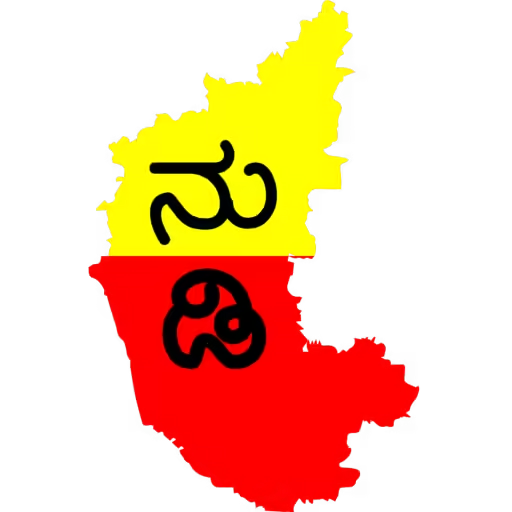Download Nudi 5.0 for fast, accurate Kannada typing with Unicode support, free fonts, and an easy-to-use keyboard layout. Perfect for all your typing needs!
Kannada, the official language of Karnataka, has a rich history of being used in literature and communication. However, the journey of Kannada typing, especially on computers, has undergone significant changes over the years. From the early days of basic fonts and encoding systems to the modern Unicode standard and user-friendly typing software like Nudi, Kannada typing has come a long way.
In this blog, we will explore the history of Kannada typing, how people typed in Kannada before Unicode, how to convert text into Unicode, and a brief look at the first computer installed in Karnataka.
Table of Contents
When Did Kannada Typing Start?
The advent of Kannada typing started with the introduction of computers in India, particularly in Karnataka, in the late 1980s and early 1990s. Initially, typing in Indian languages, including Kannada, was a challenge due to the lack of appropriate fonts, keyboard layouts, and software support.
Early Days of Kannada Typing: Pre-Unicode Era
Before the adoption of Unicode, typing in Kannada relied heavily on custom fonts and encoding systems. Some of the early Kannada fonts, such as BRH Kannada, were specific to certain applications or systems. These fonts worked by assigning Kannada characters to the slots typically used by Latin alphabets, leading to inconsistent results across different platforms and devices. As a result, there was no universal standard, and documents typed in one system were often unreadable on another.

Common issues before Unicode:
Compatibility issues: Text typed using one font would often not display correctly on other computers unless the same font was installed.
Limited fonts: There were only a few Kannada fonts available, and their design was not standardized, leading to inconsistencies in the output.
Difficult conversion: Converting text between different systems was a cumbersome process.
How People Typed Before Unicode
In the early days, Kannada typing was primarily done using ASCII-based systems. Each Kannada letter was mapped to an English character or a combination of characters. This system required users to learn complicated key combinations, making it difficult for non-technical people to adopt Kannada typing easily.
One of the most popular typing tools in the pre-Unicode era was Nudi. Nudi was initially developed with custom encoding but later adopted Unicode as the global standard evolved. However, before Unicode became prevalent, most Kannada typing was restricted to desktop publishing, government documents, and a few personal or academic applications.
What is Unicode, and How Did It Change Kannada Typing?
Unicode is an international encoding standard that assigns a unique code to every character of every language, ensuring consistent representation and interpretation across all systems and platforms.
How Unicode helped Kannada typing:
Standardization: Unicode assigned a unique code to each Kannada character, allowing seamless exchange of Kannada text across platforms and devices.
Interoperability: With Unicode, Kannada text could be shared and read on any device without the need for specialized fonts or applications.
Increased adoption: As Unicode became the standard, more people and institutions began to adopt Kannada typing for everyday use, including social media, academic work, and official documentation.
Converting to Unicode:
For those who still have documents typed in pre-Unicode formats or custom fonts, converting them into Unicode is a straightforward process. Tools like Nudi 5.0 offer built-in options to convert older Kannada text into the Unicode format, ensuring compatibility with modern systems.
Steps to convert to Unicode using Nudi 5.0:
- Open the document in Nudi 5.0.
- Use the Convert to Unicode option available in the software.
- Save the file, and your text will now be in Unicode format, ready to be used anywhere
When Was Karnataka’s First Computer Installed?
Karnataka is known for its forward-thinking approach to technology, especially being home to India’s IT capital, Bangalore. The first computer in Karnataka was installed in the early 1970s at the Indian Institute of Science (IISc) in Bangalore. This marked the beginning of Karnataka’s association with computers and technology.
However, Kannada language support on computers remained a challenge until the 1990s, when software like Nudi began to emerge, helping Kannada language gain a foothold in the digital world.
Modern Kannada Typing Software
Today, typing in Kannada has become much simpler, thanks to the development of advanced typing software like Nudi, Baraha, and Google Input Tools.
- Nudi: Developed by the Karnataka Government, Nudi is one of the most popular Kannada typing software today. Nudi 5.0 is the latest version, offering an easy-to-use interface with Unicode support.
- Baraha: Another widely used Kannada typing tool, Baraha supports multiple Indian languages and offers flexible keyboard layouts, including phonetic typing.
- Google Input Tools: Google provides a simple way to type in Kannada using its input tools, where users can type Kannada phonetically using English alphabets, and the tool automatically converts it to Kannada script.
Conclusion
The evolution of Kannada typing has been a journey from custom fonts and encoding systems to the universal adoption of Unicode, which has opened new possibilities for Kannada language in the digital era. With modern typing software like Nudi 5.0, it’s now easier than ever to type in Kannada on PCs and Android devices. As the technology continues to improve, the future looks bright for Kannada typing, ensuring that the language continues to thrive in the digital space.

